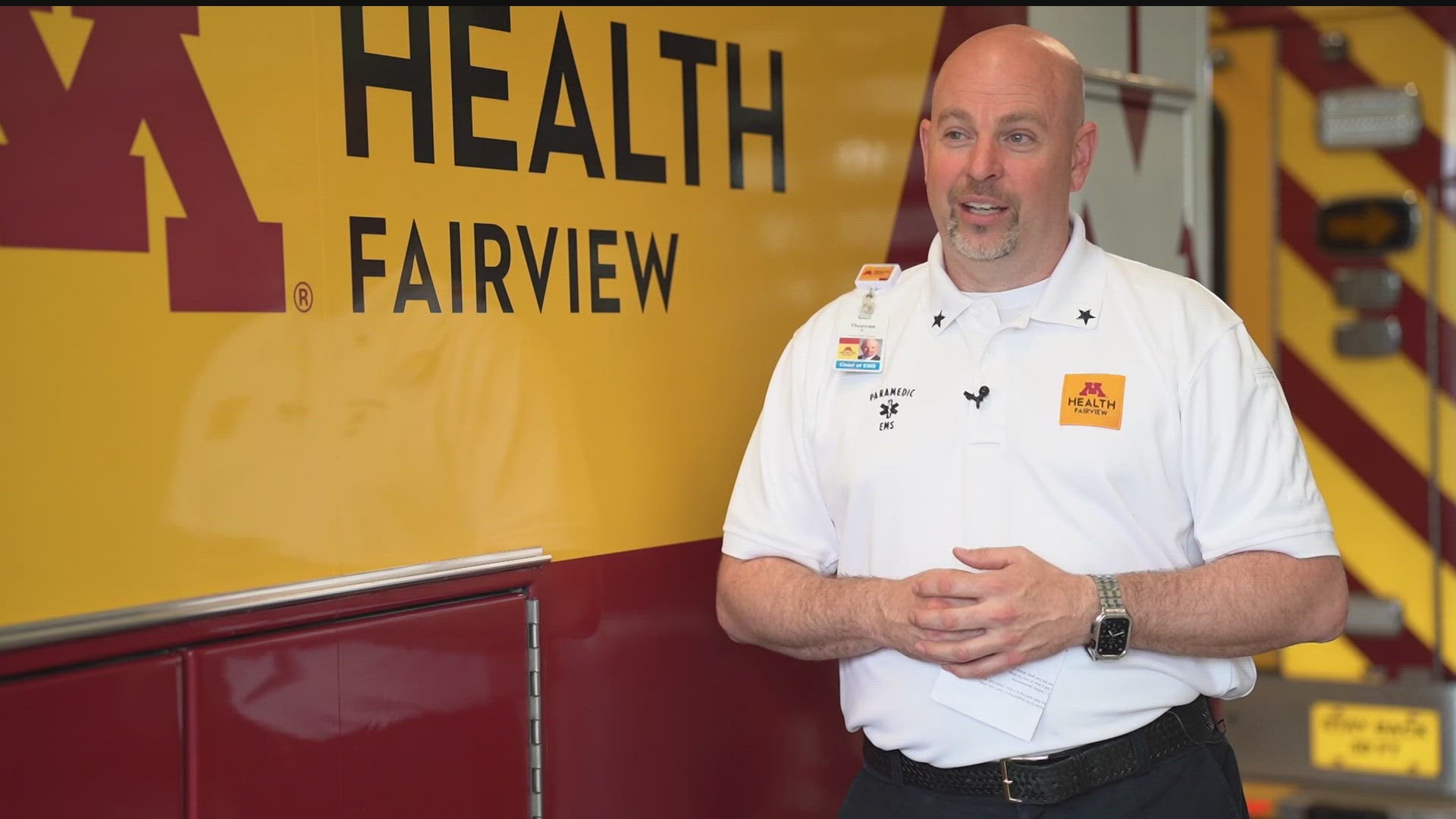MINNEAPOLIS — When Lakes Region EMS workers saved the life of Chisago County native Terry Steinmetz last fall, body camera footage of the incident offered a rare glimpse into the life of first responders.
"Terry!" critical care paramedic Kayla Hedlund shouted in the ambulance, "Your heart stopped! We had to do CPR on you for the last five minutes!"
As that encounter showed, EMS workers have some of the toughest jobs around.
And it's getting tougher, with staffing shortages plaguing providers here in Minnesota and across the country.
According to one federal estimate, EMS providers nationwide could be 40,000 workers short by 2030.
"That's probably the biggest issue that EMS is facing, is workforce shortages," said Tom Edminson, the chief of EMS for M Health Fairview. "And also development. So we're really looking at how we can develop our staff to stay in the industry, and retaining and recruiting individuals. But the shortage throughout the country is really hurting us."
The shortage can have even more devastating impacts on rural EMS agencies.
"If you have one person call off, they're shut down for the day. You have to use mutual aid partners coming from the next town over, sometimes the next county over," Edminson said, "and in these rural areas that can be a very, very long delay."
Of the workers who left the job in 2021, 39 percent cited low pay as one of the reasons.
"Ultimately, it costs agencies more money to pay less," Edminson said. "As you have more and more openings, you're having to force people to work OT, which is a safety concern."
In this session, the EMS crisis emerged as a notable issue at the state capitol.
Ultimately, the legislature approved millions for various EMS-related initiatives, including $3.2 million in paramedic grants, funding for EMT courses in high schools and community colleges, body armor, and $1 million per year for the East and West Medical Resource Control Centers.
But there's more to do.
"Our future, right now, in EMS, is really focusing on the workforce shortages," Edminson said. "How do we keep individuals in this field for longer?"
Watch more local news:
Watch the latest local news from the Twin Cities and across Minnesota in our YouTube playlist:

